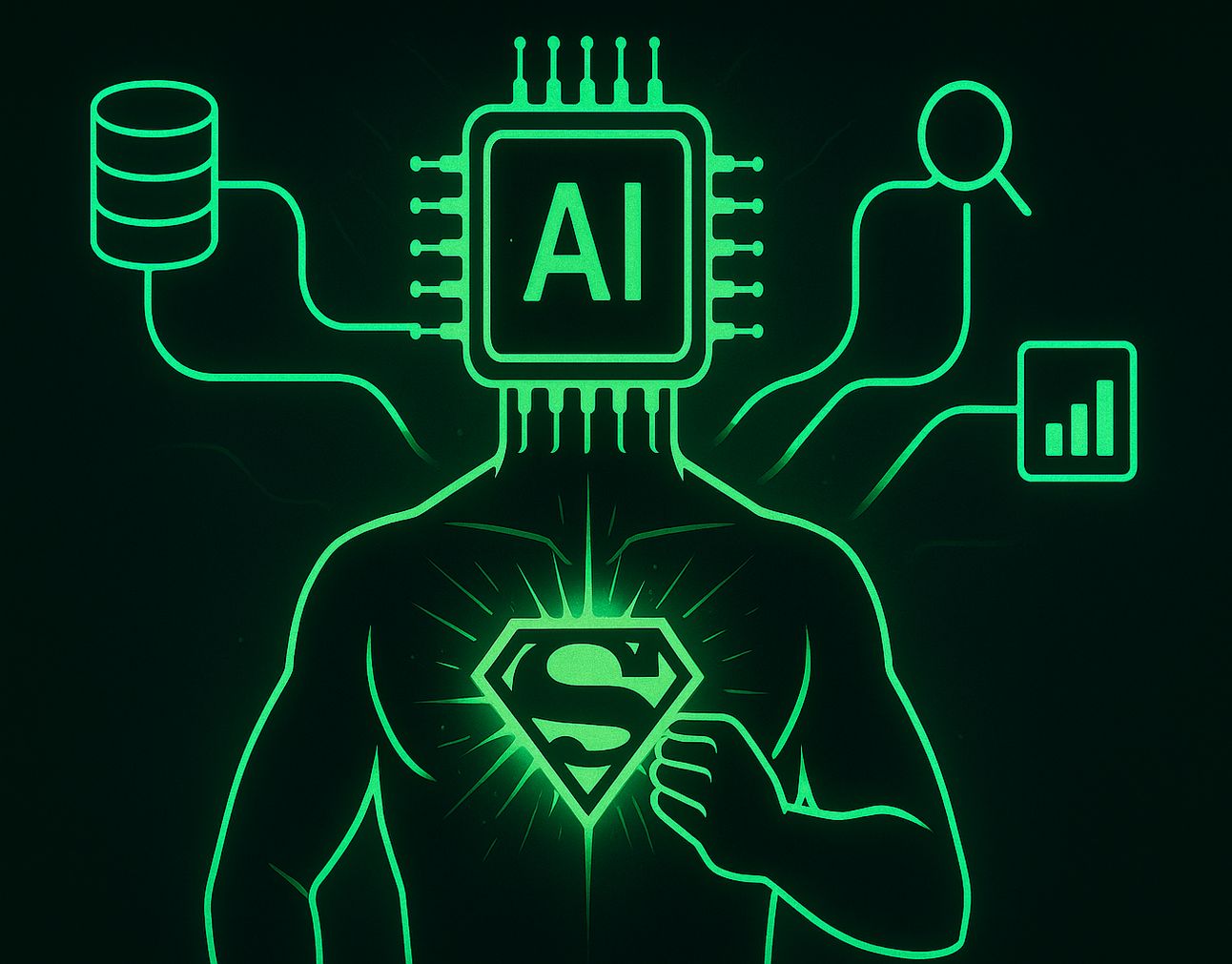- The Agent Roundup
- Posts
- 👾 Supercharge AI Agents with Context: RAG, MCP & More
👾 Supercharge AI Agents with Context: RAG, MCP & More
AI agents need real-world context to excel. Learn how RAG, MCP, and advanced search tools transform static models into dynamic, enterprise-ready systems.

Source: GPT / Agent Roundup
The most significant limitation of AI agents isn’t their reasoning ability, it’s their knowledge cutoff. While models are trained on vast datasets, they’re lacking access to real-time information, private data, or domain-specific knowledge that an organization relies on.
It’s not just about the size, even smaller, faster, and more cost-efficient models can outperform their larger counterparts when equipped with the right context tools.
Essential Context Technologies
Retrieval-Augmented Generation (RAG)
RAG remains the cornerstone of contextual AI, but it’s evolved significantly. Agentic RAG systems add AI agents to the RAG pipeline to increase adaptability and accuracy, allowing LLMs to conduct information retrieval from multiple sources and handle more complex workflows.
These systems can dynamically route queries, combine multiple retrieval strategies, and even generate follow-up questions to gather better context.
Key implementations:
Multi-step retrieval: Agents can iteratively refine their searches based on initial results
Cross-source synthesis: Combining information from documents, databases, and APIs seamlessly
Temporal awareness: Understanding when information was created and its current relevance
Search Tools Integration
Modern AI agents need real-time access to information. The current landscape includes:
SERP APIs: Traditional search engine result parsing, offering structured access to Google, Bing, Brave, and specialized search engines.
Model Provider Managed Search: Integrated search capabilities (e.g., within OpenAI's ecosystem), providing seamless access to web information with built-in safety filters.
Perplexity and Tavily: Specialized AI-powered search tools designed specifically for agent integration, offering pre-processed, context-aware search results.
Model Context Protocol (MCP) Revolution
MCP allows connecting the AI to content repositories, business tools, and development environments.
Leading MCP Tools:
Context7: An agent designed to provide up-to-date documentation for LLMs and AI code editors, offering a comprehensive MCP Server API for seamless integration. Perfect for keeping agents current with technical documentation.
GitIngest: Transforms entire repositories into AI-digestible formats, allowing agents to understand codebases, documentation, and project structures at scale.
MindsDB: Enables agents to run queries over data stored in different databases and business applications, eliminating a critical barrier to enterprise AI adoption. This unified data access is crucial for enterprise agents that need to work across multiple systems.
IDE Context Integration
Development environments are becoming AI-native with sophisticated context management:
GitHub Copilot Chat: Provides repository-wide context awareness, understanding not just the current file but the entire project structure and dependencies.
Cursor: Offers advanced context windows that can include entire codebases, documentation, and even external API references.
Codeium: Focuses on multi-file context understanding, helping agents make decisions based on project-wide patterns and conventions.
Implementation Strategy
AI agent deployments can follow a layered approach:
1. Foundation: Start with robust RAG implementation for core knowledge
2. Real-time layer: Add search tools for current information needs
3. Integration layer: Implement MCP for seamless system connectivity
4. Specialization layer: Add domain-specific context tools and custom integrations
It's about having the right information at the right time, processed in a way that enhances the agent's decision-making capabilities.
More Resources
Blog: In-depth articles on AI workflows and practical strategies for growth
AI Tool Collection: Discover and compare validated AI solutions
Consultancy: Explore AI potential or make your team AI-fit
Agency: AI implementation services to scale your business